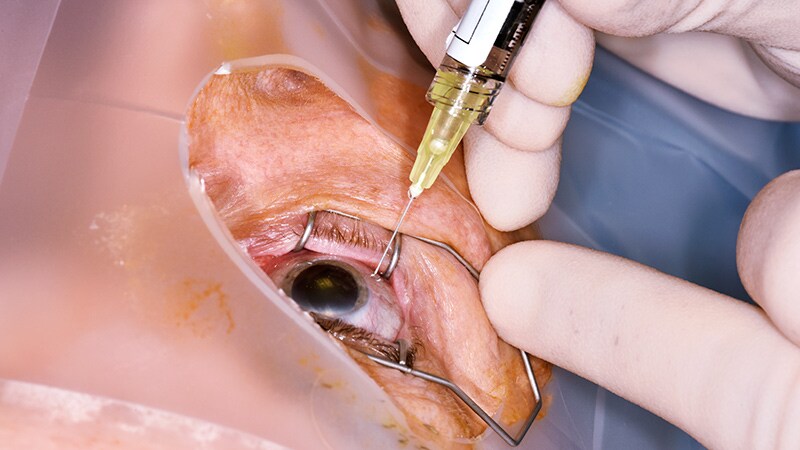NEW YORK (Reuters Health) – Pre-pandemic research suggests that mask wearing by clinicians may reduce infectious endophthalmitis in patients receiving ocular injections, and that a no-talking policy can also help. But the influence of mask wearing by patients themselves still remains to be precisely defined, ressearchers say.
“With the pandemic, our patients now need to wear masks while in the clinic. We wondered if these masks directed bacteria towards the ocular surface because this could potentially pose a risk for ocular infections during in-office procedures,” said Dr. Jonathan S. Chang of the University of Wisconsin School of Medicine and Public Health, in Madison.
“Our Schlieren imaging showed that breaths were directed towards the ocular surface and taping the tops of masks reduced this airflow,” he told Reuters Health by email.
To determine if the redirected air towards the ocular surface contained increased numbers of bacteria, Dr. Chang and colleagues compared control blood agar plates with plates placed perpendicular to the floor at each inferior orbital rim of 54 study subjects.
The plates were brought to room temperature from their storage temperature to eliminate variability in organism recovery rate based on initial incubation temperatures. Control plates were held uncovered and perpendicular to the floor for two minutes away from the subject being tested.
All subjects were asked to talk or count for two minutes and underwent a control session, followed by one without a mask; one with a standard 3M face mask with elastic ear loops and a wire-containing nasal bridge that, inappropriately, was not covering the nose; one with the mask properly covering the nose and mouth and another with the mask worn properly and with paper adhesive tape applied to seal its superior portion.
The researchers stress that they “only looked at bacterial dispersal towards the ocular surface and did not evaluate for endophthalmitis, this would be extremely difficult owing to its low prevalence.”
Dr. Chang noted, “When we performed bacterial cultures of the air around the eye surface, improperly worn masks were shown to increase airflow leading to greater bacterial growth. Properly worn masks and taped masks appeared to reduce bacterial growth.”
There was not apparent difference between taped masks non-taped, properly worn masks, but Dr. Chang cautioned that “our study did not have enough power to show a difference. This was because of some assumptions based on prior data.”
He concluded, “Further investigation would be needed to determine if taping the masks is superior, and also overall, if this does in fact affect procedures or lead to increased infection rates.”
SOURCE: https://bit.ly/3c0HxA4 Ophthalmology, online January 11, 2021.

